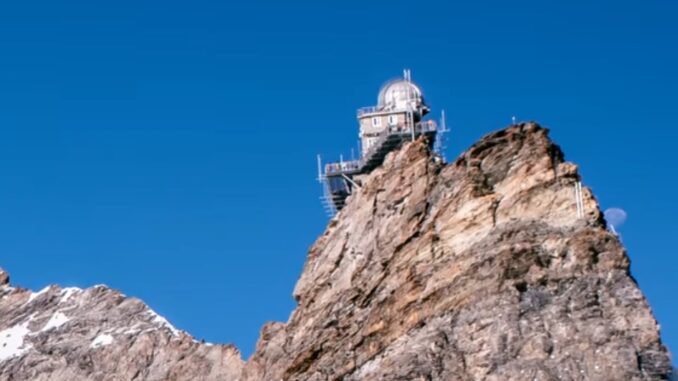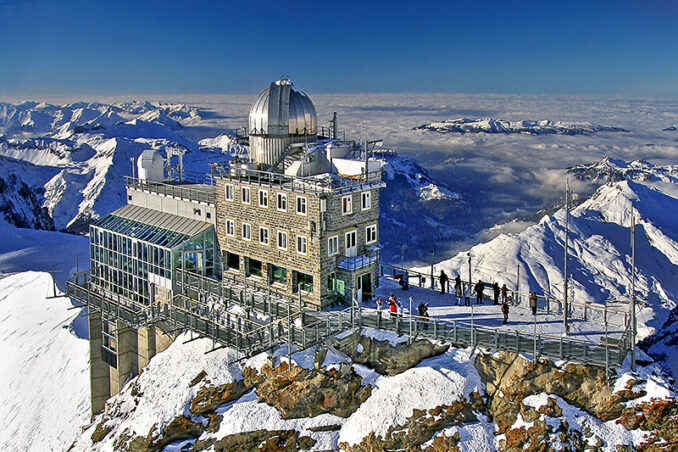
Twenty to thirty miles southwest of Zurich, at an altitude of 3,571 meters (11,716 feet – well more than two miles above sea level!), the Sphinx Observatory is one of the highest permanent astronomical facilities in the world. Only two dozen high-altitude observatories (defined as those above 3,000 meters) currently exist worldwide, with another three under construction. Of these, the Sphinx Observatory ranks nineteenth in the category of highest, but it is the oldest of this rarefied group, having been completed in 1937. It’s also probably the only one that’s a major tourist attraction, boasting over a million international visitors per year.

The obvious questions that immediately come to mind are, how did they build this structure so high in the Alps, how did they get the building materials up there, and how do so many tourists reach this place every year? The answer is, the Swiss built a high-altitude railroad first. The observatory came later.
In the second half of the nineteenth century, several proposals were offered to the Swiss government to open up this area of the Alps to tourism via rail. (The view and the scenery are spectacular.) Most of the ideas were impractical. Eventually, a plan designed by Adolf Guyer-Zeller won approval in 1893, but with a catch. Guyer-Zeller would be permitted to build a railway to the summit, but with the proviso that the railroad would promote scientific study of the high alpine environment.
Numerous setbacks, including Guyer-Zeller’s death, delayed completion. The railroad was built in phases, with scenic-lookout stations along the way. The fourth and final station was completed in 1912, only meters from where the observatory would eventually be constructed in the 1930s.
Today the facility is best known as the High Altitude Research Station Jungfraujoch (HFSJG) which focuses primarily on the environmental sciences.
One last cool feature: an elevator shaft drilled right through the mountain connects the observatory to the nearby train station. See the video!
“The World’s Most Remote Buildings” (cued to begin at the 7:30 mark, to run for 3:45 minutes)
